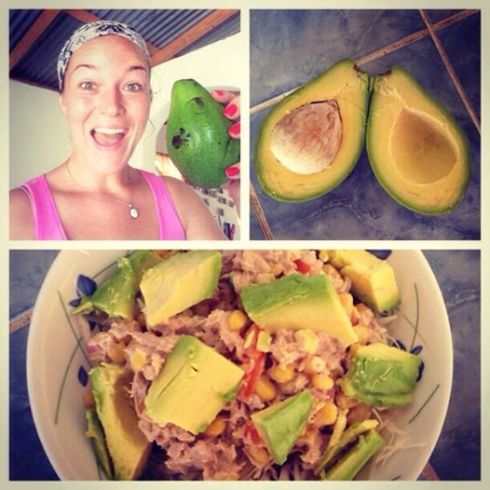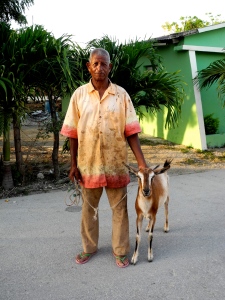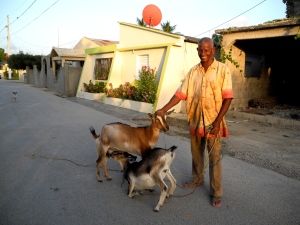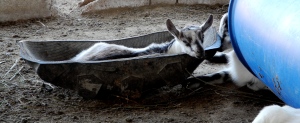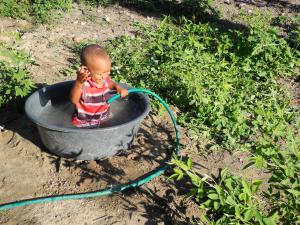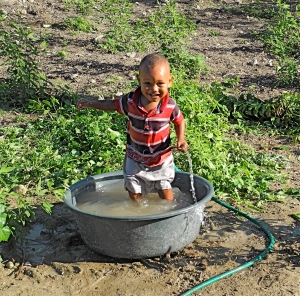It’s now August, meaning that I’ve been living out on my own for almost exactly one year. People are now more than accustomed and comfortable to approach me in my home, which also doubles as a meeting room for my various courses, internet center, arts and crafts hub, experimental kitchen, and lounge for local youth in search of English practice, hammock time, advice and/or casual conversation. Having created such a pleasurable environment also has its downsides however. In the Dominican Republic, it being August also means that there’s unbearable heat, avocados, and that it’s the front end of peak hurricane season. If it’s not raining (which is still rare for the south, despite the heavy rain and thunderstorms we got during Tropical Storm Bertha), it’s too hot to go outside without feeling like you’re melting. Yesterday it was 91 degrees at 10am. If I can stay inside my cozy home, making friendship bracelets and popcorn with my chicas, why would I go outside?
The answer lately? Funerals. In the past couple of months there have been over 14 funerals, compared to the mere two I attended last year; old age, long-term illnesses, and/or weakened immune system after having chinkungunya were the most common causes of death. Albeit sad, they are actually a great way to socialize, to become even more familiar with Dominican culture, and to help me realize how everyone in my town is related. Funerals are an inherent part of any society – everyone lives, everyone dies – but considering that family, religion, and solidarity are three major values of Dominican culture, funerals here are a pretty big occasion. Additionally, Pescadería has an impressively successful and inclusive association that offers RD$25,000 to the family, provides the deceased with a coffin, and loans chairs for all of the attending guests to sit in. Colloquially known as the “Association of the Dead”, it has been around for more than 20 years and collects at least RD$25 from each member, depending on age, position in the household, and how many children he/she has. Having this local association puts less of a burden on the family to be able to entertain so many anticipated guests.
The time of a funeral depends on what time of day a person dies. If he/she dies at dawn, the funeral begins that morning and lasts until taken to the cemetery for burial around 6pm; dying in the evening means guests are in for the long haul – arriving that night to amanecer (literally, “to dawn” or wake up) with the family for the burial the next morning. Funerals work on predictable but still very loose schedules; due to the ‘flexible’ timeliness of Dominican culture, the time of a burial can change from when originally anticipated due to delays in a family member’s arrival, need for an autopsy, or the sun being too strong (yes, this has happened).
When a Dominican dies, it is expected that at least one family member from each household of the community pays his/her respects by attending the funeral. The deceased is usually featured in the living room of the family’s house, enclosed in a coffin with a glass pane to be able see the face; though I at first found it disrespectful, it is not uncommon for people to take pictures of the body. Immediate family members and intimate friends surround the walls of the room, and it is assumed that you greet and/or hug each person. This part for me is always awkward and somber but also selfishly enlightening because sometimes I didn’t know it was so-and-so’s brother or aunt that died until I get into that room and realize the connection. Despite whether or not I knew the deceased, I most likely have gotten to know one of his/her family members. Therefore, attending the funeral of either a friend or a stranger is a way to show the family that I am here to offer condolences and to accompany them during a difficult time.
Outside of the house is where it gets real Dominican. Depending on who died and his/her impact in the community, there can be up to hundreds of guests. Get a whole bunch of Dominicans together and what do you get? Gossip, brindis, professional storytellers, swarms of kids, people watching, bedazzled (black and/or white) clothes, and dominoes. Dominoes at a funeral? Yup, and don’t be surprised if the table is surrounded by a group of men drinking rum or beer either. The juxtaposition of the concept is almost unsettling – while groups of people tell boisterous stories or complain that the coffee they’ve been served arrived too late or is too sweet, the family of the deceased is doing their best to entertain guests while mourning a loved one. Personal views aside however, the spirit of a Dominican funeral is, like most occasions here, not intended to be morose or lackluster but rather social and commemorative.
Once the deceased has been prayed over and is taken to the cemetery on the outskirts of town, the masses disperse, leaving trash and puffy-eyed relatives in its wake (pun intended?). At first I was quite uncomfortable by the idea of funerals but interestingly enough, I’ve now seen more dead people in the past 6 months than any other time of my life combined. I don’t even think that I could write such a detailed description of American funerals because 1) I’m lucky to still have most of my immediate family alive and 2) I found them depressing and intimidating. Now that I’ve been to so many here, the majority of those of people who I didn’t even know, I’m gauging the significance of attending events to simply show support and interest. Families are appreciative when they see that I’ve come to pay my respects, and in exchange I’ve enjoyed practicing small talk, comparing cross-cultural traditions, and understanding the intricate interconnectedness of the families here.
A friend recently mentioned to me that the less he kept trying to help his community, the more he actually felt like he was starting to help. Attending funerals by no means pertains to my service or duties as a Community Economic Advisor in Pescadería. However, despite the extreme awkwardness I feel at times, this sort of integration affects how people view me within the community. Rather than seeing me as simply a Peace Corps Volunteer that gives various classes or that built a basketball court, I’m regarded as one of their very own (people don’t even me offer their own chair to sit down in now, which I resentfully appreciate). Instead of an American volunteer, I am a friend, neighbor, hair braider, mango fiend, and lefty. Bridging this gap has allowed me better understand local needs, Dominican culture, and interpersonal skills. Going beyond one’s comfort zone can be difficult, but I’m finding that more often than not there are wildly memorable and surprisingly beneficial outcomes – you’ve sometimes just got to brave concepts as foreboding and daunting as death to experience and appreciate them.
Ours is not the task of fixing the entire world at once, but of stretching out to mend the part of the world that is within our reach.
